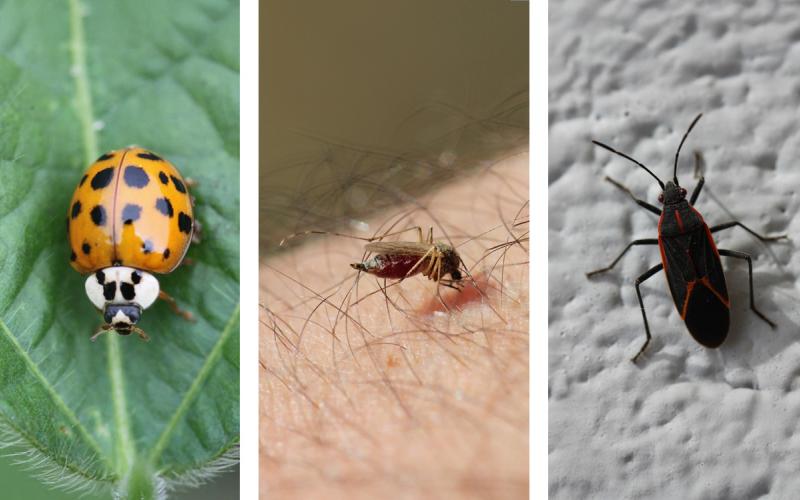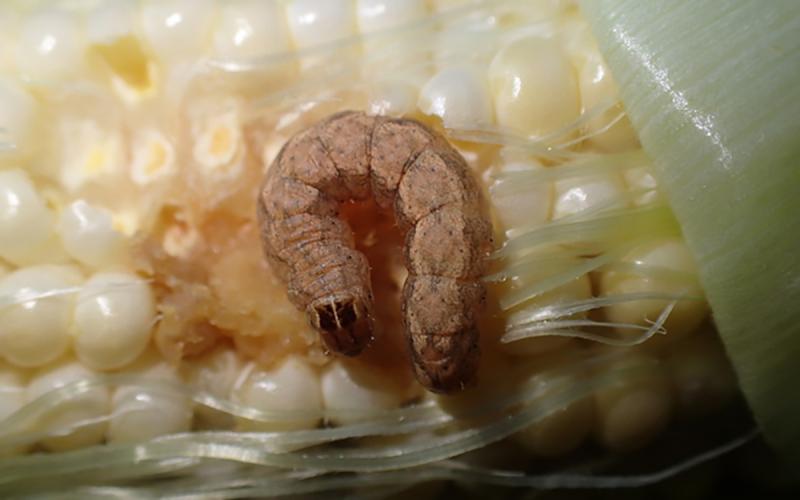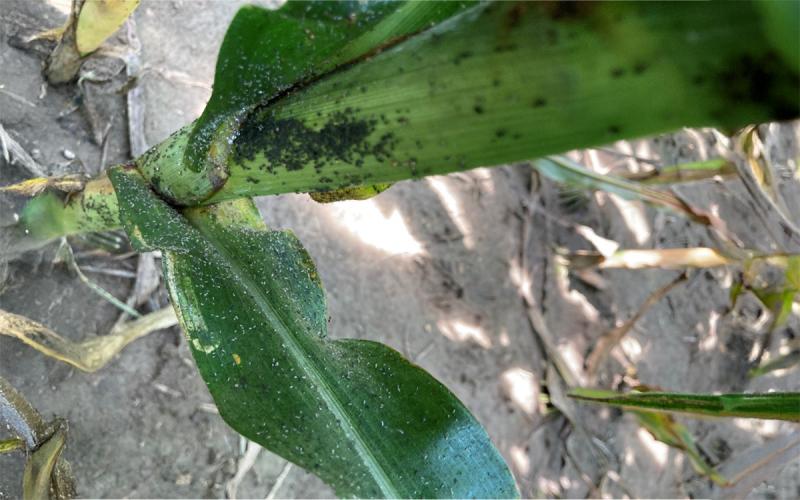Written collaboratively by Adam Varenhorst, Philip Rozeboom, Patrick Wagner, and Brad McManus.
A large majority of corn in South Dakota is still in the V1-V4 growth stages, with the most recent USDA South Dakota Crop Progress and Condition indicating that corn was 70% emerged. This means that a lot of corn in South Dakota is still susceptible to black cutworm feeding injury. Black cutworms are a migratory moth that moves into South Dakota during early spring from the Southern United States. Although black cutworm caterpillars cause minor injury to corn by feeding on leaf tissue, the serious injury occurs when caterpillar feeding results in the cutting of young corn plants. This cutting activity can lead to considerable stand loss and the possible need to replant sections of an infested field.
Fields with residue or weeds are more attractive to the moths, which may result in increased risk. No-tilled fields and low-lying areas are typically the most attractive to the black cutworm moths. Other states in the region have detected black cutworm moths, which means it is likely that the moths are also in South Dakota.
Identification
Caterpillars
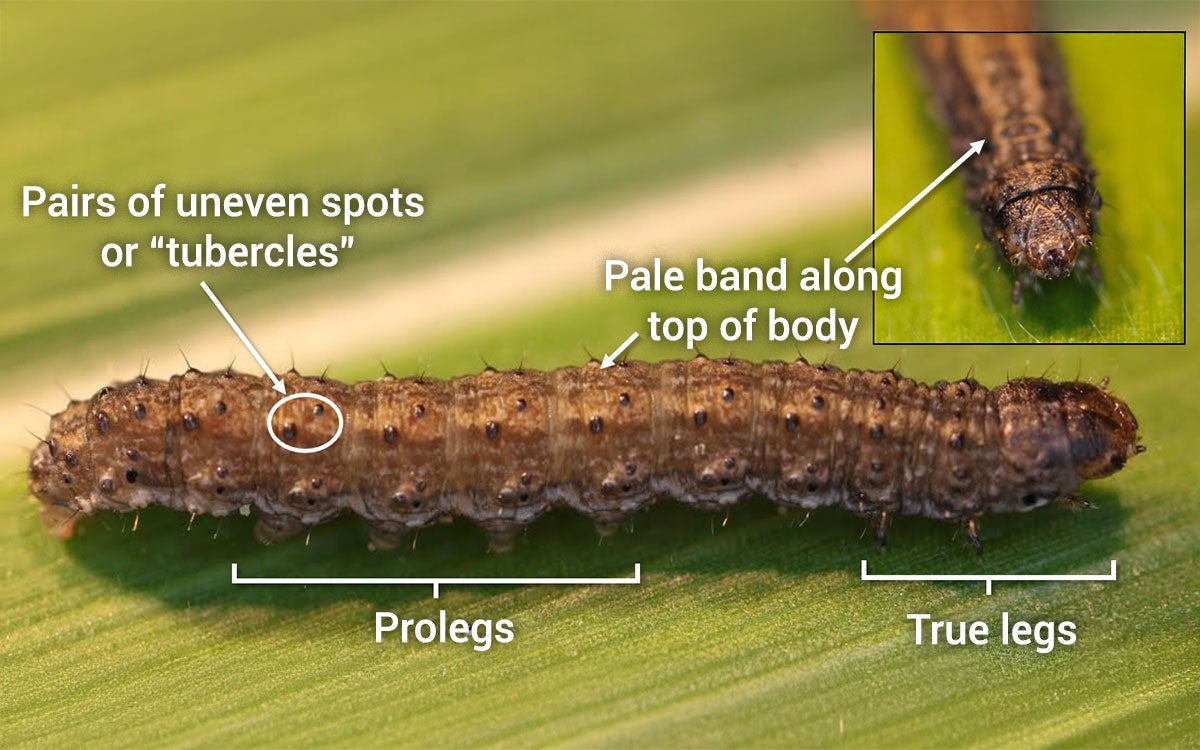
Black cutworm caterpillars range in color from light gray to brown to black and have a pale band that runs the length of the body along the top of the caterpillar. Caterpillars appear to have rough or “pebbly” texture because their skin is covered with pairs of uneven sized spots or tubercles located on the sides and near the top of each abdominal segment (Figure 1). These spots or tubercles can be used to separate black cutworm from dingy cutworm (dingy cutworms have equal sized spots), which less frequently feeds on corn. Head capsules of black cutworm caterpillars have two black stripes. The black cutworm caterpillars also have three pairs of true legs and four pairs of abdominal prolegs. When fully mature, caterpillars are approximately 1.5 inches in length.
Adults
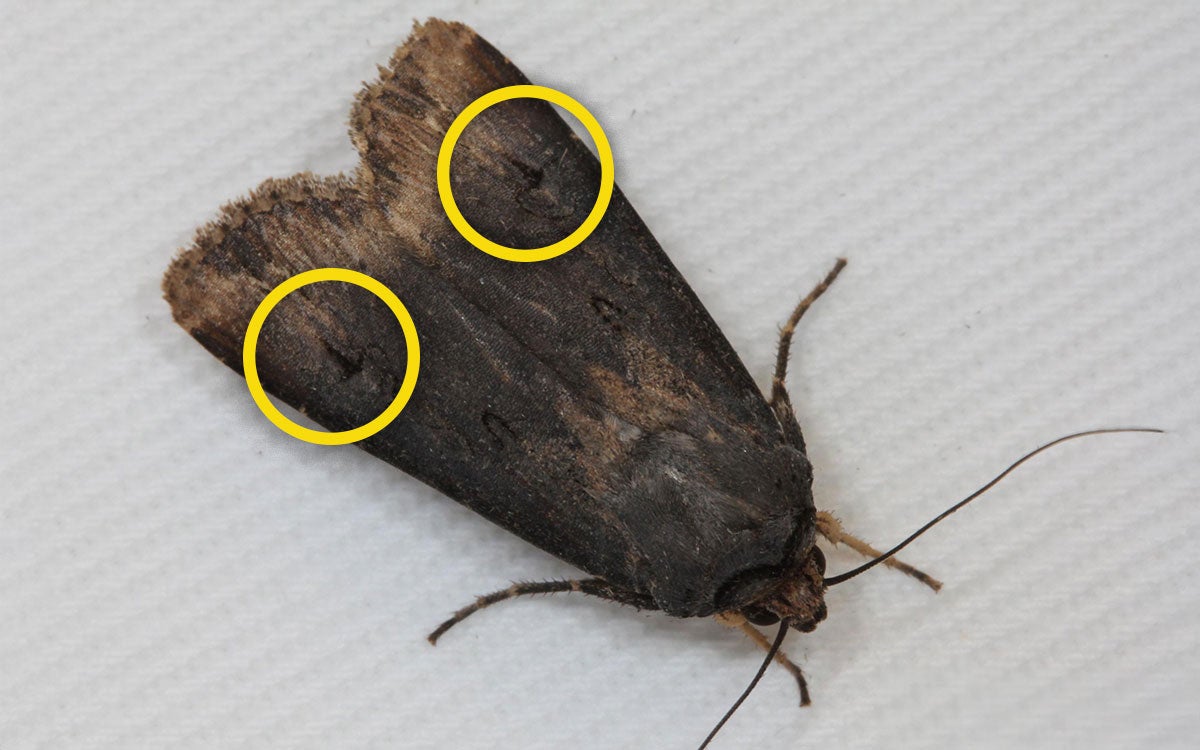
Adult black cutworms are small, brown moths that can be difficult to identify without knowing the moth's key distinguishing characteristics.
Distinguishing characteristics of black cutworm moths include the last third of the forewing being lighter in color compared to the rest of the wing. In addition, the forewings have a black marking that resembles a dagger (Figure 2). The hindwings are typically white or gray.
Lifecycle and Behavior
Black cutworms do not overwinter in South Dakota, so moths migrate north during early spring. Females will lay eggs on low-growing, broadleaved plants, and will also lay eggs on dead plant debris if more preferable host plants are not present. Moths are also attracted to low lying areas of fields due to increased moisture. Caterpillars feed at night and hide beneath disturbed soil or in cracks present in the soil during the day. Black cutworm caterpillars feed on a wide variety of crops, including corn, wheat, several different vegetables, and turf grasses. Pupation occurs in the soil. Like most moths, the adults are nocturnal, feed on nectar, and rest in grasses during the day. There are multiple generations of black cutworm per year; however, only the first generation typically causes considerable injury to corn because the black cutworm caterpillars are able to feed around the stem completely. As corn matures and the stem circumference increases the risk of cutting is reduced.
Injury to Corn
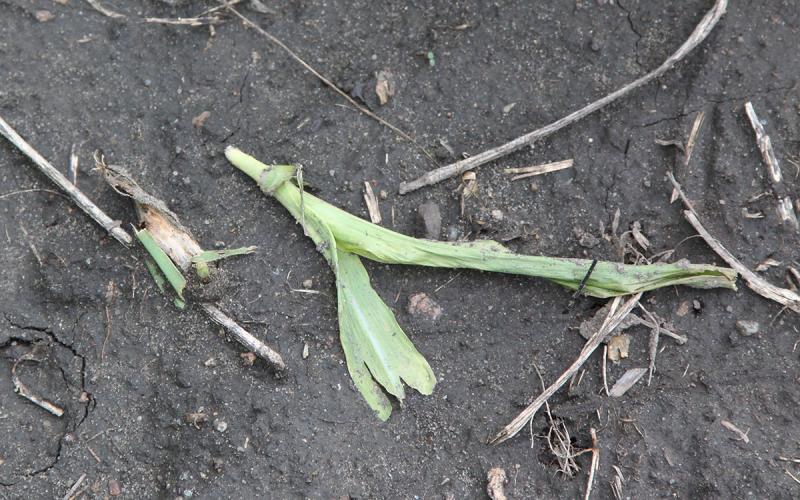
Black cutworm caterpillars feed on corn tissues close to the soil surface; caterpillars prefer to not climb plants. Stand reduction occurs when caterpillars become large enough to cut corn plants at the base (Figure 3). Corn plants can tolerate black cutworm feeding after V5 leaf stage. Injury to corn is associated with tillage practices that allow for plant residues or weeds in the spring, fields previously planted to sod or legumes, and low or poorly drained areas within a field.
Management Strategies
Scouting
Scouting for black cutworm is difficult because the caterpillars are nocturnal and hide during the day. Therefore, scouting revolves around finding corn plants with signs of caterpillar feeding either on the leaves, around the base of the stalk, or the presence of cut plants. Scouting should begin during corn emergence (VE) and continue weekly until V5 leaf stage. An insecticide treatment is recommended if greater than 5% of corn plants are cut and any black cutworm caterpillars that are found are less than 1 inch in length.
Management Options
There are several preventative management practices available for black cutworm. Many seed treatments are labeled for black cutworm, including those with the active ingredients clothianidin and thiamethoxam. There are also Bt corn hybrids labeled for the management of black cutworm, specifically hybrids that produce either Cry1F or Vip3A Bt toxins. Management of weeds within a field also can reduce the risk of injury to corn from black cutworm. Fields with reduced tillage or no tillage management can attract egg-laying females since they lay eggs on low-lying weeds and plant debris. The presence of weeds within a field can also reduce feeding on corn plants, as black cutworm larvae can more successfully develop on some weed species compared to corn. However, pre-emergent termination of weeds or incorporation of weeds and debris into the soil via tillage should occur no less than 2 weeks before planting corn to ensure black cutworm caterpillars starve before corn emerges.
Insecticidal management of black cutworm used in conjunction with scouting for cut corn and caterpillars is also effective. Currently registered insecticides for management of black cutworm in corn are listed in the latest edition of the South Dakota Pest Management Guide - Corn. Always read and follow label instructions.
